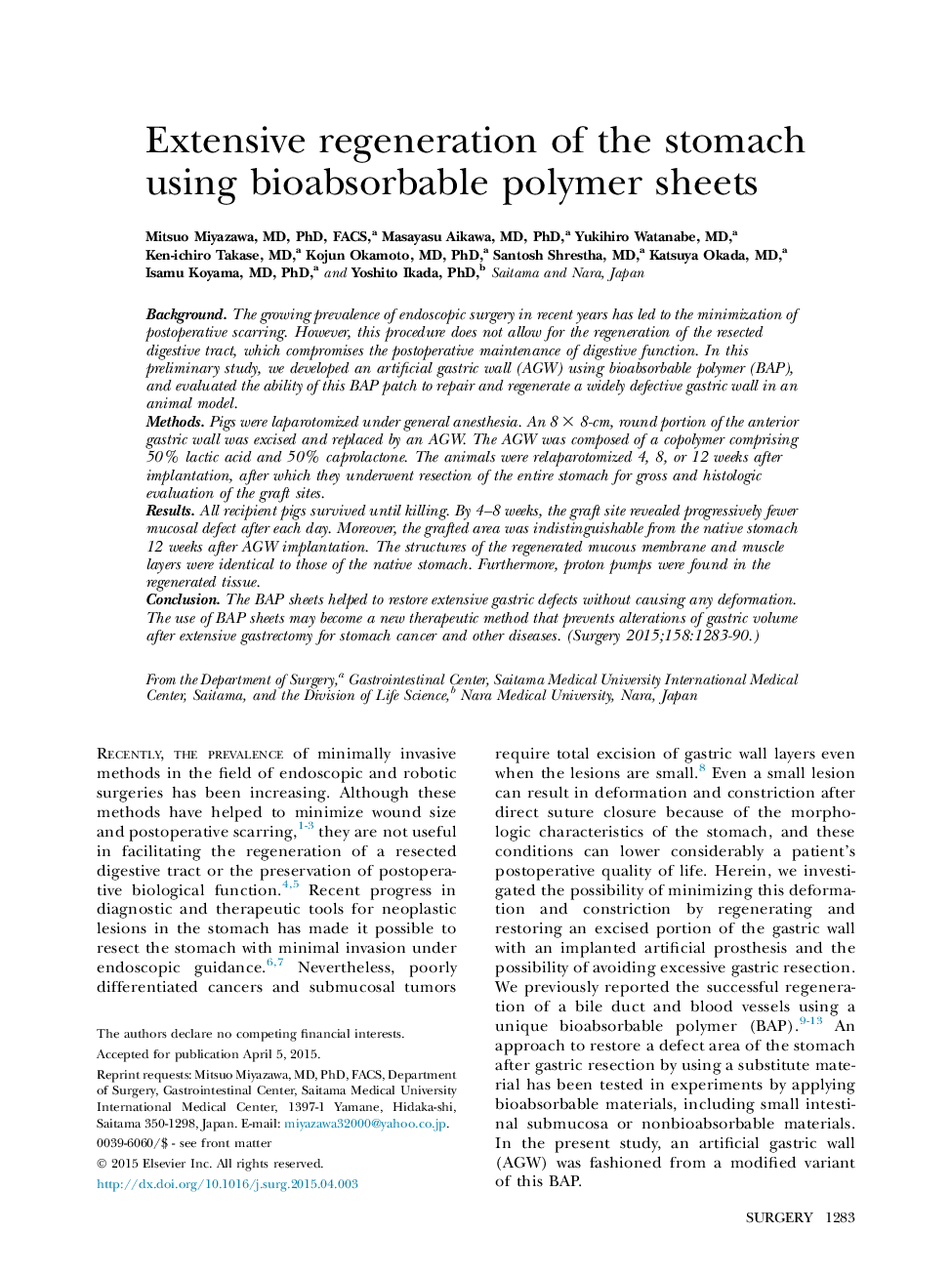| Article ID | Journal | Published Year | Pages | File Type |
|---|---|---|---|---|
| 4306764 | Surgery | 2015 | 8 Pages |
BackgroundThe growing prevalence of endoscopic surgery in recent years has led to the minimization of postoperative scarring. However, this procedure does not allow for the regeneration of the resected digestive tract, which compromises the postoperative maintenance of digestive function. In this preliminary study, we developed an artificial gastric wall (AGW) using bioabsorbable polymer (BAP), and evaluated the ability of this BAP patch to repair and regenerate a widely defective gastric wall in an animal model.MethodsPigs were laparotomized under general anesthesia. An 8 × 8-cm, round portion of the anterior gastric wall was excised and replaced by an AGW. The AGW was composed of a copolymer comprising 50% lactic acid and 50% caprolactone. The animals were relaparotomized 4, 8, or 12 weeks after implantation, after which they underwent resection of the entire stomach for gross and histologic evaluation of the graft sites.ResultsAll recipient pigs survived until killing. By 4–8 weeks, the graft site revealed progressively fewer mucosal defect after each day. Moreover, the grafted area was indistinguishable from the native stomach 12 weeks after AGW implantation. The structures of the regenerated mucous membrane and muscle layers were identical to those of the native stomach. Furthermore, proton pumps were found in the regenerated tissue.ConclusionThe BAP sheets helped to restore extensive gastric defects without causing any deformation. The use of BAP sheets may become a new therapeutic method that prevents alterations of gastric volume after extensive gastrectomy for stomach cancer and other diseases.
